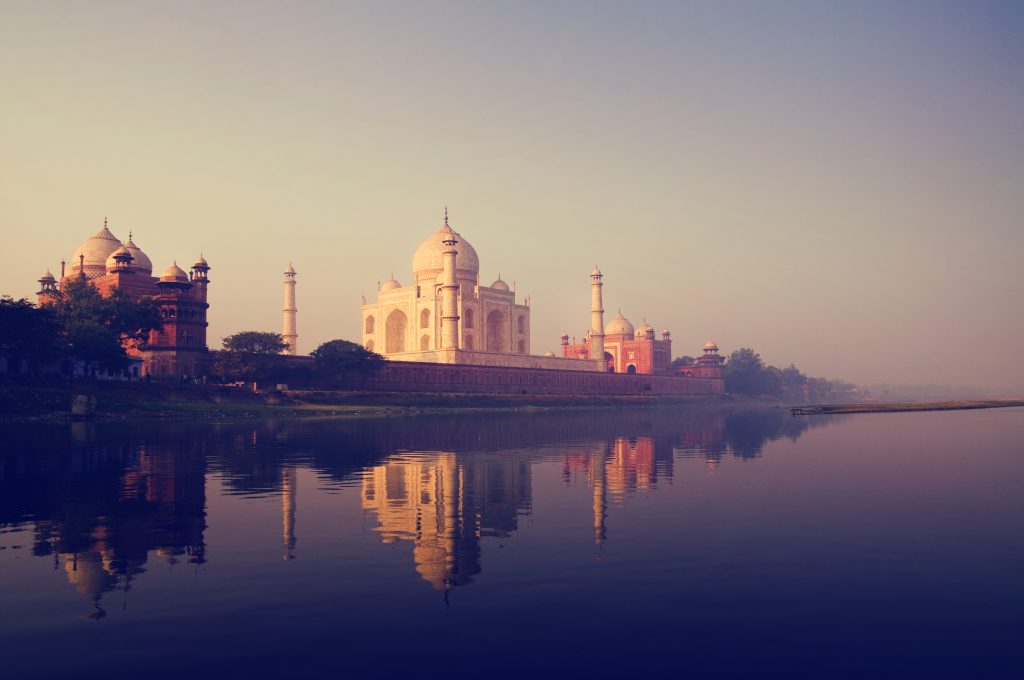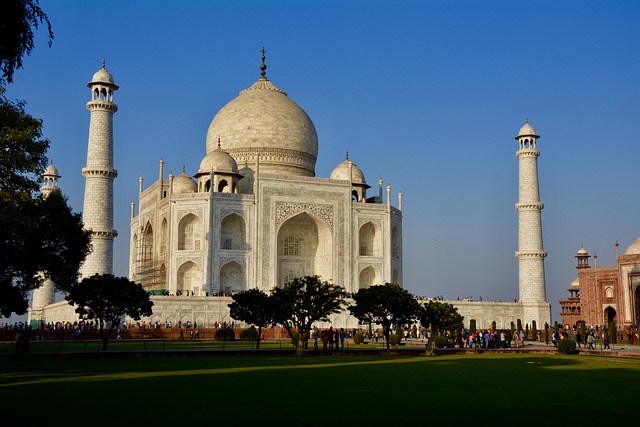Nestled on the banks of the Yamuna River in Agra, India, the Taj Mahal stands as a testament to eternal love and architectural brilliance. This magnificent white marble mausoleum, often hailed as one of the most beautiful buildings in the world, attracts millions of visitors from across the globe each year. Let’s take a journey through the history, architecture, and the enchanting experience of visiting the Taj Mahal.
A Love Story Etched in Stone
The story of the Taj Mahal begins with a grand romance. In the early 17th century, the Mughal Emperor Shah Jahan fell deeply in love with Mumtaz Mahal, a Persian princess. Their love story was one for the ages, marked by deep affection and mutual respect. Devastated by her death, Shah Jahan vowed to build the most beautiful monument in her memory, a symbol of their eternal love.
Construction of the Taj Mahal began in 1632 and took 22 years to complete, employing over 20,000 artisans and craftsmen from across Asia. The result was a masterpiece that blends Persian, Islamic, and Indian architectural styles, showcasing the pinnacle of Mughal architecture.
Architectural Marvel
The Taj Mahal is renowned for its breathtaking beauty and intricate design. The central structure is a grand mausoleum made of pristine white marble, which changes color with the light of the day. At sunrise, it glows pinkish, in the afternoon it shines dazzling white, and under the moonlight, it appears silver.
The mausoleum is flanked by identical buildings on either side, a mosque and a guesthouse, both made of red sandstone. The complex is set within lush gardens laid out in the classic charbagh (four-part) style, symbolizing paradise in Islamic tradition.
The central dome of the Taj Mahal, standing at 240 feet, is surrounded by four smaller domes and four slender minarets at each corner of the platform. These minarets are slightly tilted outwards, a clever design to protect the main tomb in case of an earthquake. The marble surfaces are adorned with intricate inlay work of semi-precious stones, forming delicate floral patterns and Quranic calligraphy, which adds to the monument’s ethereal beauty.
The Experience of Visiting the Taj Mahal
Visiting the Taj Mahal is an experience that stays with you forever. As you approach the grand entrance gate, the sight of the monument framed in the archway takes your breath away. The gardens leading up to the Taj are meticulously maintained, offering a serene environment that contrasts with the bustling city of Agra outside.
One of the best times to visit the Taj Mahal is at sunrise. As the first light of day touches the marble, the entire structure seems to glow, creating a magical and almost surreal atmosphere. Another magical time is during the full moon, when the Taj Mahal sparkles under the moonlight, offering a romantic and tranquil experience.
Inside the mausoleum, the tombs of Shah Jahan and Mumtaz Mahal rest side by side, a touching reminder of their love story. The interior is as exquisite as the exterior, with intricate carvings and a serene ambiance that encourages reflection and reverence.
Practical Tips for Visitors
Timing: The Taj Mahal is open from sunrise to sunset every day except Fridays. Plan your visit early in the morning to avoid the crowds and experience the monument in the soft morning light.

Tickets: There are separate queues for foreign and Indian visitors, and it’s advisable to book in advance to save time.
Dress Code: While there is no strict dress code, it’s respectful to dress modestly.
Photography: Photography is allowed, but tripods are not permitted. Be mindful of other visitors and the sanctity of the site when taking pictures.
Guides: They can provide historical context and interesting anecdotes that bring the story of the Taj Mahal to life.
The Surroundings of the Taj Mahal
While the Taj Mahal is undoubtedly the highlight of Agra, the city has more to offer. Just a short distance away is the Agra Fort, another UNESCO World Heritage site. This massive red sandstone fortress served as the main residence of the Mughal emperors and offers stunning views of the Taj Mahal from its ramparts.
Fatehpur Sikri, a historic city just an hour’s drive from Agra, is another must-visit. Built by Emperor Akbar, this well-preserved ghost town boasts magnificent palaces, courtyards, and the grand Buland Darwaza (Gate of Victory).
Conclusion
The Taj Mahal is more than just a monument; it is a symbol of love, beauty, and the rich cultural heritage of India. Its timeless allure continues to captivate millions of visitors who come to marvel at its beauty and reflect on the love story that inspired its creation. Whether you’re a history buff, an architecture enthusiast, or a hopeless romantic, a visit to the Taj Mahal promises to be an unforgettable experience.
